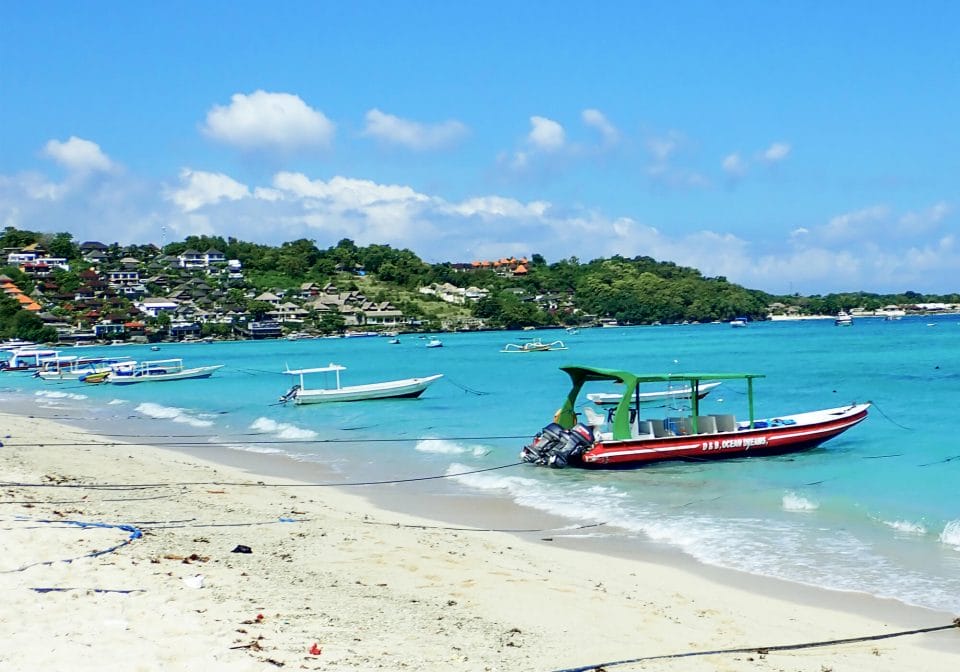
1. Use a GoPro mount
When filming while snorkeling, it can be hard to maintain smooth footage. Using either a one-handed mount can upgrade your footage and reduce the shakiness. Be mindful when filming what the footage will look like. If you are a very strong swimmer, then a two-handed mount can reduce the shakiness further. Before purchasing a action camera, research whether the model has a ‘smooth’ or ‘super smooth’ mode, which will do a lot of the work for you.
2. Red Filter
Without any physical red filter or settings, your footage is likely to have a blue/green hue. This can reduce the vibrance of coral reefs and marine life. Adding a red filter will counter the natural blue/green hue and bring the colors out and restore your video.
3. Start Recording Earlier
Whether you’re capturing your snorkeling experience for social media, creating a video, or for your own blog, you’re likely to be putting together short 10 second clips. From our experience you’d prefer to be editing a larger clip than piece together small clips, it gives you more flexibility in the edit stage. To help with this, start recording 5 seconds before the key moment. This will save the head ache of post-production.
4. Play the angles
A one angle snorkel vid can be a bit flat. To liven the footage, try adding different angles, such as a birds eye view paning over the coral. A slow 180 degree shot, a look back at yourself snorkeling to give some context.
5. Plan the approach
Whether you’re capturing your snorkeling experience for social media, creating a video, or for your own blog, you’re likely to be putting together short 10 second clips. From our experience you’d prefer to be editing a larger clip than piece together small clips, it gives you more flexibility in the edit stage. To help with this, start recording 5 seconds before the key moment. This will save the head ache of post-production.
6. Frame Rate
The latest GoPro 10 and 11 gives your more options with resolution and frame rate. The 11 HeroBlack now goes up to 120 frame rate at 4k resolution. This can give you super slow-mo footage which can add a cinematic quality, especially when paired with music. Check out our slow-mo footage of a whale shark.

Frequently Asked Questions
We’ve all been there, when you’ve had an awesome snorkelling experience and when you come to look at the footage, its shaky and a nightmare to edit. Shaky footage is normally caused by a snorkeler swimming while recording, unsteady recording, and not using a mount.
One of our early snorkel lessons, to make a cool snorkel video, the filming is more important than the edit. But you still want to enjoy the snorkel experience, but keep in mind how the video will look when snorkelling. To improve your footage, we’d recommend using a one handed mount, checking the angle of the GoPro and it’s field of view before starting, starting to record slightly early to give you more film to edit and floating while recording can give you better stabilisation.
This is very common when swimming in average visibility water, deeper water or when algae is present. There are a few solutions to this problem. One you can edit the red balance in post edit bringing the vibrancy back to the footage. Two, you can add an attachment red filter to your GoPro, we’re not the biggest fan of these filters as the you can get different results depending on the water visibility. Three, on the newer GoPro’s (GoPro Hero11) you can increase the Red balance on the settings prior to your snorkel. From our experience changing the red balance and then editing in post production you can get some awesome footage!
Not to worry, you can still get awesome footage with older GoPros, although the stabilisation will be more reliant on the snorkelers filming skills.
The key to good stabilisation underwater footage is having a GoPro with built in stabilisation technology and to have your GoPro on a mount.
We’ve used GoPro’s all the way back to the GoPro 3 Silver. These days, we use the a GoPro HERO11 which give you fantastic stability, a red filter setting, options with 4k/5.3k resolution, and 60/120 frame rate.

Luke
FOUNDER
Luke is a passionate snorkeler who started Snorkelverse to live his dream of combining his passions for snorkeling, marine life, protecting marine ecosystems, and helping others.
Top 10 Travel Tips








